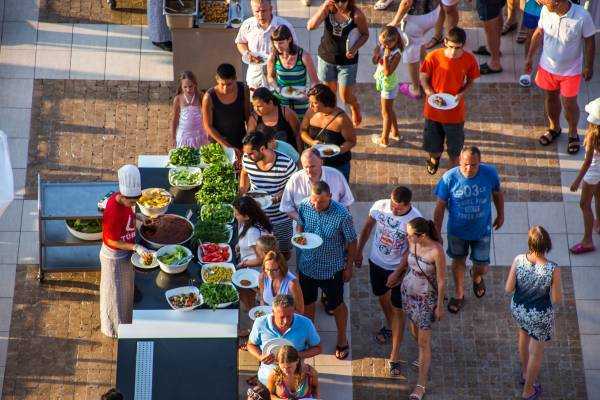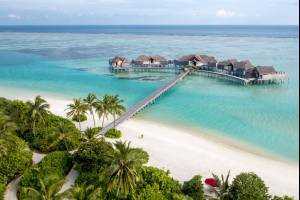
Historical and cultural heritage sites that will help you understand the specifics of the Maldivian way of life are within walking distance from the pier in Male. Thus, against the backdrop of a towering ten-story residential building and passing transport, you can see the current a non-functioning minaret (Munnaaru) built over 340 years ago. There are several historical monuments in Male that showcase the grandeur of the country's past, contrasting with the cacophony of modern city life.
The majestic buildings of some of the mosques in Male, built of coral stone and wood and decorated with magnificent carvings, are being considered by UNESCO for inclusion in the World Heritage List. Hukuru Miskiy, known as the Friday Mosque, dates back to 1656. It is surrounded by a cemetery where the city's nobility are buried, the coral tombstones of which create an air of grandeur. The mosque is active and serves as a place for inner reflection and prayer.
Next to the mosque on Medhuziyarai Magu is a minaret known as Munnaaru, which was built in a distinctive medieval style. The round tower is in excellent condition, and it is hard to believe that the minaret was built in 1674. It was originally used to call the faithful to prayer, but in 1984 this function was taken over by the minaret of the Grand Mosque, located at the Islamic Centre. Across the road opposite is the Medhu Ziyarat temple, painted in vibrant blue and white, with a majestic embossed door, which was built in honor of the Moroccan missionary Abu Barakat Yusuf Al-Barbari, who brought Islam to the Maldives in 1153.
On the same street is the Mulee Aage Temple, a more recent heritage site dating back to 1906, restored and formerly used as the official residence of the country's president. Today, the building houses the Supreme Court and the Mulee Aage has regained its status as a residence.
The tomb of Mohammed Thakurufanu, a national hero who led a band of Maldivian guerrillas against Portuguese occupation in the 16th century and later became Sultan, is located in Bihuroazu Kamanaa Miskij on Neeloafaru Magu Street. The house he lived in still stands today and is one of the country's notable heritage sites.
The building is the only example of traditional Maldivian architecture remaining in the country. A visit to this historical site will allow you to get acquainted with the amazing heritage of the Maldives, which has been preserved.
A visit to the National Museum of the Maldives is a wonderful opportunity not only to escape the heat and city noise of Male, but also to get acquainted with the country's great past and historical roots. Various exhibitions and displays - from the pre-Islamic period with its coral sculptures to the country's first, bulky computer - vividly demonstrate the dynamics of the Maldives' development from a feudal society against the backdrop of pastoral landscapes to a progressive, modern state over the past few decades.
Source: tourprom.ru













